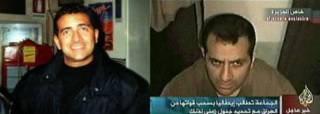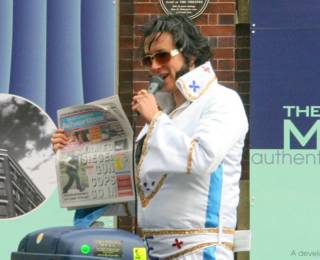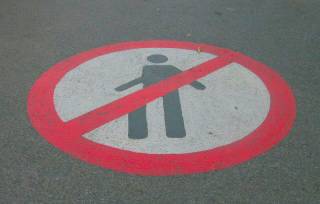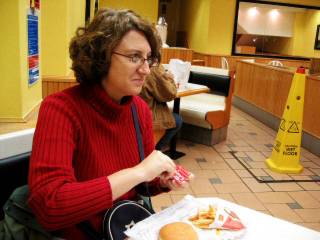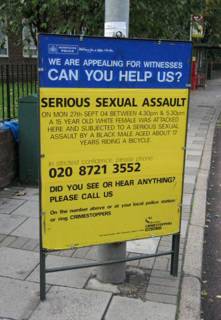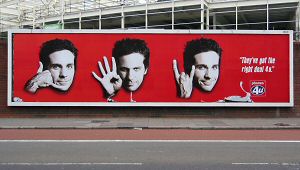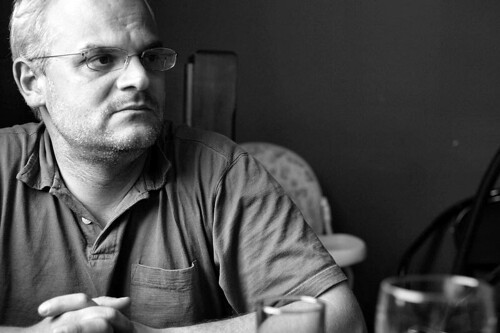We went for a photo stroll around West London today and saw a peculiar sign on the side of an old cinema.
.
Cinematograph Theatre Continuous Performance Seat 1/ - 6d & 3d
.
Cinematograph Theatre Continuous Performance Seat 1/ - 6d & 3d
The pricing, as well as the curious terminology dates this sign back to well before 1971.
.
Seeing the sign I fell into reminiscing about 'old money'. I was only five when the UK decimalised but I can still remember old money, largely because adults around me didn't let it leave their hearts, even after it was taken from their wallets. Pre-decimal British currency had history and character. Each coin had a personality, such that people gave them affectionate names. We still use some of those old names but no new ones have been coined since we moved over to more modern, essentially soulless money.
.
Prior to 1971. The British pound was divided in 20 shillings. Each shilling was worth 12 pence. Prices were broken down into pounds, shillings and pence; which amusingly meant that people had to be able to simultaneously calculate to Base 12, Base 20 and fractions when working with money. Prices were written out like this:
.
£1.2/ 6½d
£1.2/ 6½d
.
i.e. One pound two shillings six and a half pence. Or £1.305 in decimal equivalent.
i.e. One pound two shillings six and a half pence. Or £1.305 in decimal equivalent.
.
The 'd' abbreviation, rather than 'p' for pennies, came from the Roman units Lire, Sesteri and Denari; known as LSD. Pounds, shillings and pence were abbreviated as 'L or £', 's or /' and 'd'.
The 'd' abbreviation, rather than 'p' for pennies, came from the Roman units Lire, Sesteri and Denari; known as LSD. Pounds, shillings and pence were abbreviated as 'L or £', 's or /' and 'd'.
.
Still with me?
Still with me?
.
In addition to pound notes, shilling and penny coins, we also had all sorts of other amusing currency in circulation, including; farthing (1/4d), half penny (1/2d), two penny (2d), three penny (3d), groat (4d), sixpence (6d), florin (2s), half crown (2s 6d) and crown (5s). Many of these coins were enormous and required that they'd be spread evenly between trouser pockets or held in a centrally mounted pouch; otherwise people would walk in ever-decreasing circles like a ship with rudder damage.
In addition to pound notes, shilling and penny coins, we also had all sorts of other amusing currency in circulation, including; farthing (1/4d), half penny (1/2d), two penny (2d), three penny (3d), groat (4d), sixpence (6d), florin (2s), half crown (2s 6d) and crown (5s). Many of these coins were enormous and required that they'd be spread evenly between trouser pockets or held in a centrally mounted pouch; otherwise people would walk in ever-decreasing circles like a ship with rudder damage.
.
Other units were also used, even though actual notes or coins were not minted in those units. The most common examples were Marks (13 shillings 4 pence / 160 pence) used in property transactions and Guineas (1 pound 1 shilling / 252 pence) used to price expensive items.
Other units were also used, even though actual notes or coins were not minted in those units. The most common examples were Marks (13 shillings 4 pence / 160 pence) used in property transactions and Guineas (1 pound 1 shilling / 252 pence) used to price expensive items.
.
For many years you could readily tell what social class you were dealing with, depending on how services were priced; pennies (working class), shillings (tradesmen), pounds (professionals), guineas (aristocracy). A plumber would frequently refer to 20 shillings rather than a pound. Posh people would talk in guineas because their money was worth that little bit extra more than upstart professionals who worked for their cash. Even today, auction houses often work in guineas because it is an excellent way to take an extra 5% off inbred people willing to pay a premium for pricing the things that they buy in their own special money.
For many years you could readily tell what social class you were dealing with, depending on how services were priced; pennies (working class), shillings (tradesmen), pounds (professionals), guineas (aristocracy). A plumber would frequently refer to 20 shillings rather than a pound. Posh people would talk in guineas because their money was worth that little bit extra more than upstart professionals who worked for their cash. Even today, auction houses often work in guineas because it is an excellent way to take an extra 5% off inbred people willing to pay a premium for pricing the things that they buy in their own special money.
.
But no, not even these refinements made British money confusing enough.
.
But no, not even these refinements made British money confusing enough.
.
People wouldn't bother to use the word shilling in conversation and would typically describe prices in the form:
.
'two and three'
'two and three'
.
i.e. two shillings and three pence or 27 pence
.
But that was still far too simple. So the British gave their coins names; tanner (sixpence), thruppeny (three pence), quid (pound), bob (shilling).
But that was still far too simple. So the British gave their coins names; tanner (sixpence), thruppeny (three pence), quid (pound), bob (shilling).
.
Even the simplest of financial transactions would frequently become a battle of wits between the participants, as they deftly chose to discuss prices in a way that best suited their purposes; trying to outfox their opponent by flipping between different number bases.
Even the simplest of financial transactions would frequently become a battle of wits between the participants, as they deftly chose to discuss prices in a way that best suited their purposes; trying to outfox their opponent by flipping between different number bases.
.
e.g.
e.g.
.
'How much for that pearl-encrusted waistcoat?'
'six bob'
'too pricey for me mate. I'll give you a crown'
'I do it for five and six'
'knock a tanner off that and you've got a deal'
etc. etc.
'How much for that pearl-encrusted waistcoat?'
'six bob'
'too pricey for me mate. I'll give you a crown'
'I do it for five and six'
'knock a tanner off that and you've got a deal'
etc. etc.
.
Even in 2004 it is unlikely that computer technology has advanced to a point that could keep up with a system as fiendish as this. Decimalization was inevitable. Unlike, other countries, we kept the original currency names and coins when changing over, which meant that the old shilling was worth 12 (old) pence one day and five (new) pence the next, Six pence coins were worth 2.5p and so on. Confusion was inevitable and widespread. The shock of the transition was too much to bear for some people, who never got their heads round what they saw as the unnecessarily complicated new money i.e. £1 = 100 pence. Well into the 1980's, people would still mentally convert prices into shilling equivalents - a £1.73 price tag would cause someone to remark 'Christ, that's almost thirty five bob!' or 'Gadzooks! That's one pound 14 shillings and thruppence! in real money'.
Even in 2004 it is unlikely that computer technology has advanced to a point that could keep up with a system as fiendish as this. Decimalization was inevitable. Unlike, other countries, we kept the original currency names and coins when changing over, which meant that the old shilling was worth 12 (old) pence one day and five (new) pence the next, Six pence coins were worth 2.5p and so on. Confusion was inevitable and widespread. The shock of the transition was too much to bear for some people, who never got their heads round what they saw as the unnecessarily complicated new money i.e. £1 = 100 pence. Well into the 1980's, people would still mentally convert prices into shilling equivalents - a £1.73 price tag would cause someone to remark 'Christ, that's almost thirty five bob!' or 'Gadzooks! That's one pound 14 shillings and thruppence! in real money'.
.
How I wish we'd retained the old system; along with the English Channel and the invention of radar, this was one of the cornerstones of British defence from foreign invasion. As I watch overseas tourists struggling with idiot-proof, multilingual, fully decimalized ticket machines in Underound stations, I long for an alternate universe where those machines would read 'Single ticket to Earls Court £2.4/6d. Please insert two guineas and half a crown.'. Natural selection would ruthlessly apply and those people too stupid to count in bases of 12, 20 or 21 (for guineas) or use fractions would be scalped and removed of any money they were not intellectually equipped to deserve. Can you imagine what the pocket calculators would look like?
How I wish we'd retained the old system; along with the English Channel and the invention of radar, this was one of the cornerstones of British defence from foreign invasion. As I watch overseas tourists struggling with idiot-proof, multilingual, fully decimalized ticket machines in Underound stations, I long for an alternate universe where those machines would read 'Single ticket to Earls Court £2.4/6d. Please insert two guineas and half a crown.'. Natural selection would ruthlessly apply and those people too stupid to count in bases of 12, 20 or 21 (for guineas) or use fractions would be scalped and removed of any money they were not intellectually equipped to deserve. Can you imagine what the pocket calculators would look like?
.
and I haven't even got into Cockney Rhyming slang. Bored by the sheer straightforwardness of the old money, Londoners further refined the system by coming up with lots of additional names for their money, including; a pony (£25), a monkey (£500) and a carpet (£3), but another time …
and I haven't even got into Cockney Rhyming slang. Bored by the sheer straightforwardness of the old money, Londoners further refined the system by coming up with lots of additional names for their money, including; a pony (£25), a monkey (£500) and a carpet (£3), but another time …

















